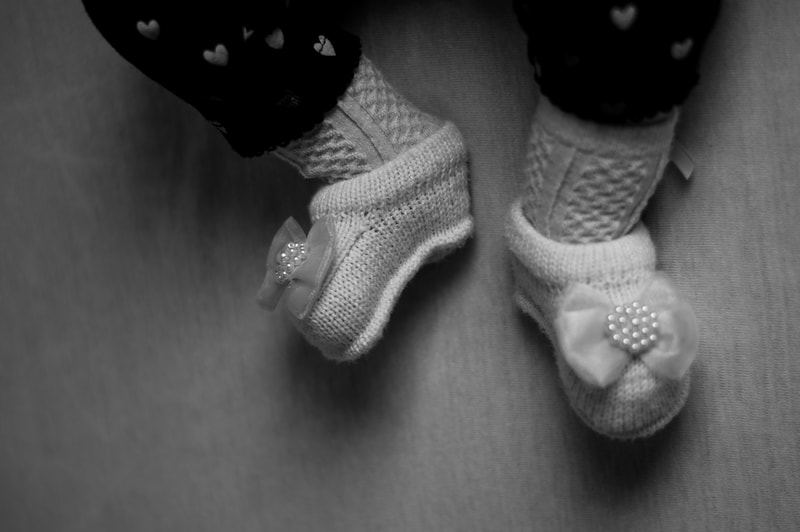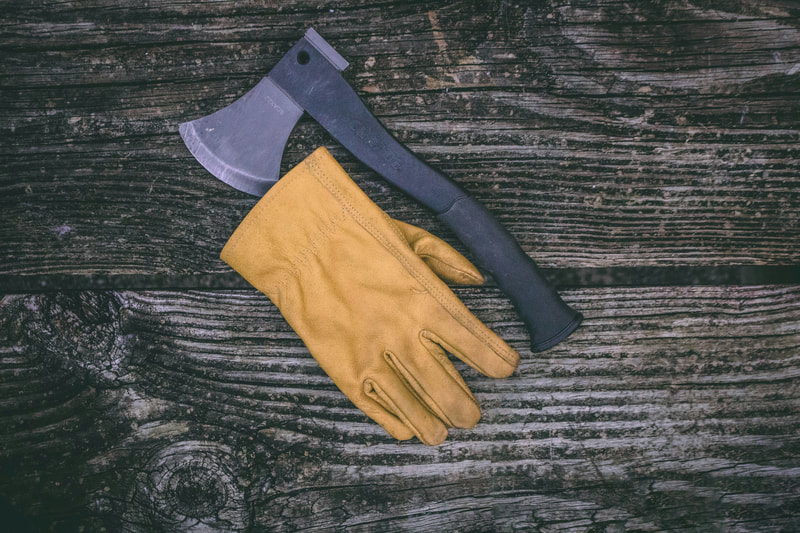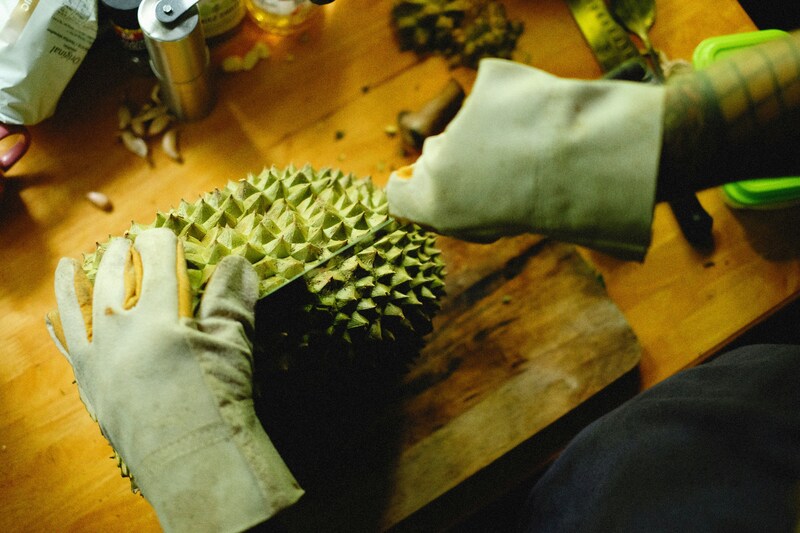🧦 Socks - What You Need to Know
Socks come in all sorts of lengths. No-show socks hide inside your shoes. Ankle socks come up to your ankle. Crew socks go to mid-calf and are super common. Knee-high and thigh-high socks give you more coverage when it's cold or if you want to make a fashion statement. Some socks even have separate spots for each toe to cut down on rubbing.
Socks are made from different stuff depending on what they're for. Cotton's soft and lets your feet breathe, so it's good for everyday. Wool will keep you warm even if it gets wet, great for winter and hikes. Polyester and nylon can last a while and keep moisture away. Bamboo is naturally antibacterial and feels nice. Spandex stretches, and silk is sometimes in thin socks for extra comfort.
Socks also do different things. Athletic socks have extra padding and deal with sweat. Compression socks help your blood flow, helpful when you're on a long trip or have some health problems. Diabetic socks don't squeeze your feet too tight. Thermal socks keep you extra warm. Dress socks are thin for fancy times, and hiking or work socks are made tough.
When picking socks, look for things like smooth toes to avoid irritation, padding on the bottom for comfort, material that breathes to keep sweat down, and strong heels and toes, so they last.
Wash your socks inside out with a gentle soap and don't use high heat – it can wreck the stretchiness. Letting them air dry keeps them going longer.
🧤 Gloves - What You Need to Know
Gloves do all kinds of jobs, from keeping your hands warm to protecting them when you're doing hard work. Winter gloves usually have some kind of toasty layer and might block wind or water. Touchscreen gloves let you use your phone. Work gloves are tough, for building or gardening. Driving gloves help you grip the wheel. Liner gloves are very thin and go under other gloves for added warmth. Disposable gloves are from latex, nitrile, or vinyl and are for medical or cleaning stuff. There are also sports gloves for cycling or skiing, tactical gloves for rough places, and gloves that can't be cut or burned for factory work.
Gloves are made of different stuff, too. Leather's strong and protects well. Wool is a natural insulator. Fleece is warm and lets your hands breathe. Nylon and polyester are light and can handle some water. Medical gloves are thin, bendy, and disposable. Materials like Kevlar are used if the gloves need to stand up to sharp stuff.
Some gloves have tips that work on touchscreens, tougher palms for gripping, ways to tighten the wrist, warm layers, or are made to breathe. Getting the size right is key – your gloves should fit your hand well, not too tight or loose. Sizes are usually based on how wide your palm is around.
If you take care of your gloves, they will last you a long time. Clean leather gloves and treat them now and then. Wash wool gloves by hand and let them air dry. Store gloves flat or hanging up, so they don't get bent out of shape.
🧼 How Socks and Gloves are Different
Socks and gloves both keep you comfy and safe, but what they do is different. Socks cushion your feet, keep them dry, and stop blisters. Gloves help you grip, keep your hands warm, and protect you from bad stuff. Socks are sized by shoe size, and gloves go by hand size. They're often made from the same stuff, but they're shaped differently.
🎯 One Last Thing
Socks and gloves are simple things we use every day, but there's actually a lot of good design in them. Good fabrics and shapes make them comfy, useful, and built to last. When you get dressed up, go to the gym, or work outside, the right socks or gloves can really help.
Socks come in all sorts of lengths. No-show socks hide inside your shoes. Ankle socks come up to your ankle. Crew socks go to mid-calf and are super common. Knee-high and thigh-high socks give you more coverage when it's cold or if you want to make a fashion statement. Some socks even have separate spots for each toe to cut down on rubbing.
Socks are made from different stuff depending on what they're for. Cotton's soft and lets your feet breathe, so it's good for everyday. Wool will keep you warm even if it gets wet, great for winter and hikes. Polyester and nylon can last a while and keep moisture away. Bamboo is naturally antibacterial and feels nice. Spandex stretches, and silk is sometimes in thin socks for extra comfort.
Socks also do different things. Athletic socks have extra padding and deal with sweat. Compression socks help your blood flow, helpful when you're on a long trip or have some health problems. Diabetic socks don't squeeze your feet too tight. Thermal socks keep you extra warm. Dress socks are thin for fancy times, and hiking or work socks are made tough.
When picking socks, look for things like smooth toes to avoid irritation, padding on the bottom for comfort, material that breathes to keep sweat down, and strong heels and toes, so they last.
Wash your socks inside out with a gentle soap and don't use high heat – it can wreck the stretchiness. Letting them air dry keeps them going longer.
🧤 Gloves - What You Need to Know
Gloves do all kinds of jobs, from keeping your hands warm to protecting them when you're doing hard work. Winter gloves usually have some kind of toasty layer and might block wind or water. Touchscreen gloves let you use your phone. Work gloves are tough, for building or gardening. Driving gloves help you grip the wheel. Liner gloves are very thin and go under other gloves for added warmth. Disposable gloves are from latex, nitrile, or vinyl and are for medical or cleaning stuff. There are also sports gloves for cycling or skiing, tactical gloves for rough places, and gloves that can't be cut or burned for factory work.
Gloves are made of different stuff, too. Leather's strong and protects well. Wool is a natural insulator. Fleece is warm and lets your hands breathe. Nylon and polyester are light and can handle some water. Medical gloves are thin, bendy, and disposable. Materials like Kevlar are used if the gloves need to stand up to sharp stuff.
Some gloves have tips that work on touchscreens, tougher palms for gripping, ways to tighten the wrist, warm layers, or are made to breathe. Getting the size right is key – your gloves should fit your hand well, not too tight or loose. Sizes are usually based on how wide your palm is around.
If you take care of your gloves, they will last you a long time. Clean leather gloves and treat them now and then. Wash wool gloves by hand and let them air dry. Store gloves flat or hanging up, so they don't get bent out of shape.
🧼 How Socks and Gloves are Different
Socks and gloves both keep you comfy and safe, but what they do is different. Socks cushion your feet, keep them dry, and stop blisters. Gloves help you grip, keep your hands warm, and protect you from bad stuff. Socks are sized by shoe size, and gloves go by hand size. They're often made from the same stuff, but they're shaped differently.
🎯 One Last Thing
Socks and gloves are simple things we use every day, but there's actually a lot of good design in them. Good fabrics and shapes make them comfy, useful, and built to last. When you get dressed up, go to the gym, or work outside, the right socks or gloves can really help.
Okay, here's a rewrite to sound more human:
**Socks: A Quick Guide**
**1. Sock Types (By Length):**
* No-Shows: Totally hidden in your shoes—good for sneakers and loafers.
* Ankle Socks: Stop right at your ankle.
* Crew Socks: Mid-calf height—your basic everyday socks.
* Mid-Calf/Calf-Length: Just a bit taller than crew socks.
* Over-the-Calf/Knee-High: Go up to or over your knee. Dressy or for sports.
* Thigh-High: Stylish or for keeping extra warm.
* Toe Socks: Each toe has its own little pocket. Great if you wear barefoot-style shoes.
**2. What Socks Are Made Of:**
* Cotton: Lets your feet breathe, feels soft, soaks up sweat. Great for every day.
* Wool: Stays warm, even when wet. Perfect for winter or hiking.
* Polyester: Lasts a while and dries fast. Usually mixed with other stuff.
* Nylon: Makes socks stronger and stretchy.
* Spandex (Lycra): Super stretchy for a tight fit.
* Bamboo Fiber: Soft, fights germs, wicks away sweat.
* Silk: Light and smooth. Sometimes used as a liner.
* Acrylic: A fake wool kind of thing.
**3. Socks for Specific Stuff:**
* Athletic Socks: Extra padding, wicks sweat, supports your arch.
* Compression Socks: Helps your blood flow better. Good for medicine or travel.
* Diabetic Socks: Don't squeeze too tight, no seams at the toes.
* Thermal/Winter Socks: Thick and keep you warm.
* Dress Socks: Thin and fancy for when you dress up.
* Hiking Socks: Padded, wicks sweat, prevents blisters.
* Work Socks: Tough and padded for hard jobs.
**4. Things to Look For in Socks:**
* No seams at the toes (comfy!)
* Arch support
* Sweat-wicking stuff
* Breathable fabric
* Something that fights odor
* Strong heels and toes
* Padded soles
**5. Sock Sizes:**
* Usually based on your shoe size.
* Some are one size fits most, especially if they're stretchy.
* Always check the size chart to make sure they will fit.
**6. Taking Care of Your Socks:**
* Wash them inside out.
* Don't use high heat. It ruins the stretch.
* Use gentle soap.
* Let them air dry to make them last.
**🧤 Gloves: The Basics**
**1. Types of Gloves (What Are They For?):**
* Winter Gloves: Warm, usually waterproof or block the wind.
* Touchscreen Gloves: You can use your phone with them on!
* Work Gloves: Strong. For construction, gardening, etc.
* Driving Gloves: Thin leather (or fake leather) for grip and style.
* Liner Gloves: Thin gloves you wear under bigger gloves for extra warmth.
* Medical Gloves: Throw-away gloves (latex, nitrile, or vinyl).
* Sport Gloves: For biking, lifting weights, skiing…
* Tactical/Military Gloves: Tough, often padded to protect your hands.
* Welding Gloves: Don't catch fire, keep the heat out.
* Cut-Resistant Gloves: For safety in the kitchen or at work.
**2. What Gloves Are Made Of:**
* Leather: Lasts a long time and protects your hands. (Cow, goat, or deer skin)
* Wool: Warm!
* Fleece: Soft and warm.
* Fake Fabrics: Nylon, polyester are usually water-resistant and light.
* Rubber/Latex/Nitrile/Vinyl: Waterproof, used for medicine or cleaning.
* Kevlar or Metal Mesh: For gloves that prevent cuts.
**3. What to Look For in Gloves:**
* Touchscreen tips
* Waterproof
* Windproof
* Warm inside
* Adjustable wrist part
* Palms that help you grip
* Padding on the knuckles
* Breathable spots
* Padding to stop vibration
**4. Glove Sizes:**
* Usually based on how big around your hand is (around your knuckles).
* Sizes go from XS to XXL, or with numbers (like 6–11).
* How long your fingers are and how wide your palms are, also.
**5. How to Keep Your Gloves Nice:**
* Read the tags. Some can't be washed in a machine.
* Leather gloves: Wipe with a wet cloth, condition them sometimes.
* Wool gloves: Wash by hand or on a gentle cycle, let them air dry.
* Store them flat or hanging up. Don't wad them up.
**🧵 Bonus Facts:**
* The oldest socks we know about are from Egypt (around 300–500 AD).
* Gloves used to show you were fancy (like rich people in the old days).
* Compression socks were first made for medicine but now athletes use them.
* Gloves are important safety gear.
**Socks: A Quick Guide**
**1. Sock Types (By Length):**
* No-Shows: Totally hidden in your shoes—good for sneakers and loafers.
* Ankle Socks: Stop right at your ankle.
* Crew Socks: Mid-calf height—your basic everyday socks.
* Mid-Calf/Calf-Length: Just a bit taller than crew socks.
* Over-the-Calf/Knee-High: Go up to or over your knee. Dressy or for sports.
* Thigh-High: Stylish or for keeping extra warm.
* Toe Socks: Each toe has its own little pocket. Great if you wear barefoot-style shoes.
**2. What Socks Are Made Of:**
* Cotton: Lets your feet breathe, feels soft, soaks up sweat. Great for every day.
* Wool: Stays warm, even when wet. Perfect for winter or hiking.
* Polyester: Lasts a while and dries fast. Usually mixed with other stuff.
* Nylon: Makes socks stronger and stretchy.
* Spandex (Lycra): Super stretchy for a tight fit.
* Bamboo Fiber: Soft, fights germs, wicks away sweat.
* Silk: Light and smooth. Sometimes used as a liner.
* Acrylic: A fake wool kind of thing.
**3. Socks for Specific Stuff:**
* Athletic Socks: Extra padding, wicks sweat, supports your arch.
* Compression Socks: Helps your blood flow better. Good for medicine or travel.
* Diabetic Socks: Don't squeeze too tight, no seams at the toes.
* Thermal/Winter Socks: Thick and keep you warm.
* Dress Socks: Thin and fancy for when you dress up.
* Hiking Socks: Padded, wicks sweat, prevents blisters.
* Work Socks: Tough and padded for hard jobs.
**4. Things to Look For in Socks:**
* No seams at the toes (comfy!)
* Arch support
* Sweat-wicking stuff
* Breathable fabric
* Something that fights odor
* Strong heels and toes
* Padded soles
**5. Sock Sizes:**
* Usually based on your shoe size.
* Some are one size fits most, especially if they're stretchy.
* Always check the size chart to make sure they will fit.
**6. Taking Care of Your Socks:**
* Wash them inside out.
* Don't use high heat. It ruins the stretch.
* Use gentle soap.
* Let them air dry to make them last.
**🧤 Gloves: The Basics**
**1. Types of Gloves (What Are They For?):**
* Winter Gloves: Warm, usually waterproof or block the wind.
* Touchscreen Gloves: You can use your phone with them on!
* Work Gloves: Strong. For construction, gardening, etc.
* Driving Gloves: Thin leather (or fake leather) for grip and style.
* Liner Gloves: Thin gloves you wear under bigger gloves for extra warmth.
* Medical Gloves: Throw-away gloves (latex, nitrile, or vinyl).
* Sport Gloves: For biking, lifting weights, skiing…
* Tactical/Military Gloves: Tough, often padded to protect your hands.
* Welding Gloves: Don't catch fire, keep the heat out.
* Cut-Resistant Gloves: For safety in the kitchen or at work.
**2. What Gloves Are Made Of:**
* Leather: Lasts a long time and protects your hands. (Cow, goat, or deer skin)
* Wool: Warm!
* Fleece: Soft and warm.
* Fake Fabrics: Nylon, polyester are usually water-resistant and light.
* Rubber/Latex/Nitrile/Vinyl: Waterproof, used for medicine or cleaning.
* Kevlar or Metal Mesh: For gloves that prevent cuts.
**3. What to Look For in Gloves:**
* Touchscreen tips
* Waterproof
* Windproof
* Warm inside
* Adjustable wrist part
* Palms that help you grip
* Padding on the knuckles
* Breathable spots
* Padding to stop vibration
**4. Glove Sizes:**
* Usually based on how big around your hand is (around your knuckles).
* Sizes go from XS to XXL, or with numbers (like 6–11).
* How long your fingers are and how wide your palms are, also.
**5. How to Keep Your Gloves Nice:**
* Read the tags. Some can't be washed in a machine.
* Leather gloves: Wipe with a wet cloth, condition them sometimes.
* Wool gloves: Wash by hand or on a gentle cycle, let them air dry.
* Store them flat or hanging up. Don't wad them up.
**🧵 Bonus Facts:**
* The oldest socks we know about are from Egypt (around 300–500 AD).
* Gloves used to show you were fancy (like rich people in the old days).
* Compression socks were first made for medicine but now athletes use them.
* Gloves are important safety gear.



